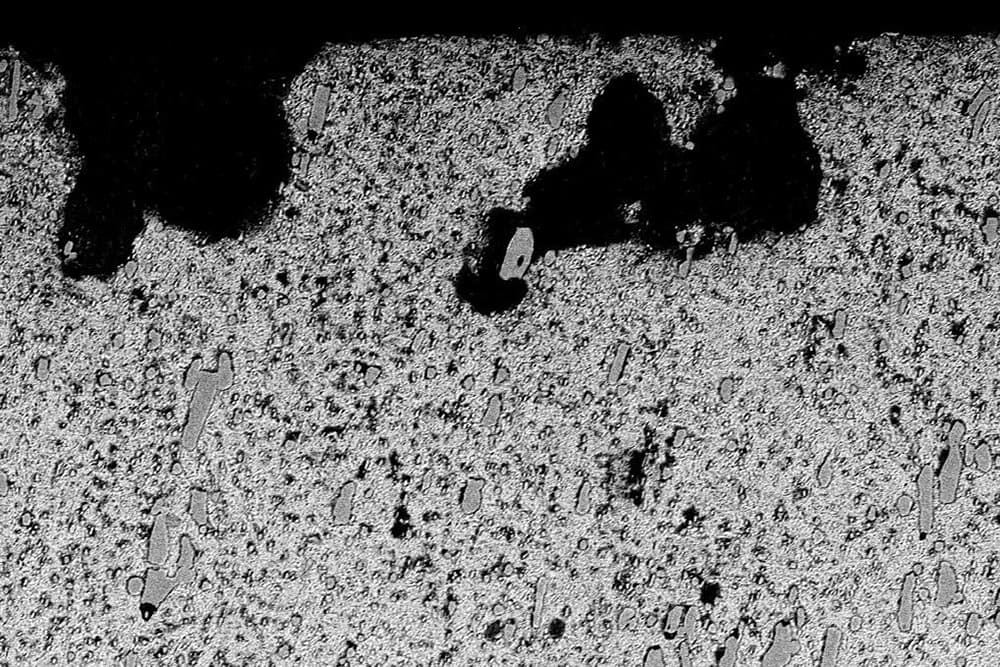What was the challenge or problem to solve?
The project focuses on the need for one of our customers to reverse engineer and approve a new steel supplier. To do this, he had to know as accurately as possible the traditional alloy that this supplier had been using in his application.


Given the complexity of the project, the first internal working sessions were aimed at determining and choosing the most appropriate techniques, optimising the number of analyses and samples. In our experience, this step is essential to perform the identification in an unequivocal way, with quantitative and accurate results.
The next step was to condition the samples by cutting and chipping them. In this way, we were able to analyse the microstructure of the material, which does not provide essential information to determine its nature.
With the samples already prepared, we carried out different experiments. We used X-ray fluorescence (XRF) to determine the elemental composition of the materials. Using optical microscopy, we observed their microstructure. Using scanning electron microscopy (SEM), we were able to obtain information on the topography and composition of the samples. Additionally, we used the universal testing machine (UTM) to obtain information on the fracture toughness.
From all the experimental data obtained, we were able to identify the steel alloy by comparison with the applicable standard and, as a result, prepare a report for our customer to decide on this new steel supplier.

